Philosopher, polymath, educator, synthesist, founder. These are just some of the words used to describe Aristotle, the 4th century BCE Greek luminary who (along with Plato) is known as the “father of Western philosophy.” With subjects ranging from physics, biology, and astronomy to logic, ethics, politics, and metaphysics, there is scarcely any field of study or subject that he did not have a significant and lasting impact on.
In fact, within the realm of astronomy and physics, Artistotle would be one of the leading authorities whose work would be considered canon for over two thousand years after his death. From Classical Antiquity to the Roman Empire to the Middle Ages and the Rennaissance, Aristotle would be considered the authoritative source on countless subjects.
In some respects, Artistotle’s authority was a mixed blessing. As modern scholars have noted, many of the Greek polymath’s theories (particularly in the realm of astronomy) were incorrect. Ergo, accepting them as canon had a limiting effect on scholarship until the “Scientific Revolution” – where developments in the fields of mathematics, physics, astronomy, biology, and chemistry would cause many Aristotelian theories to be challenged.
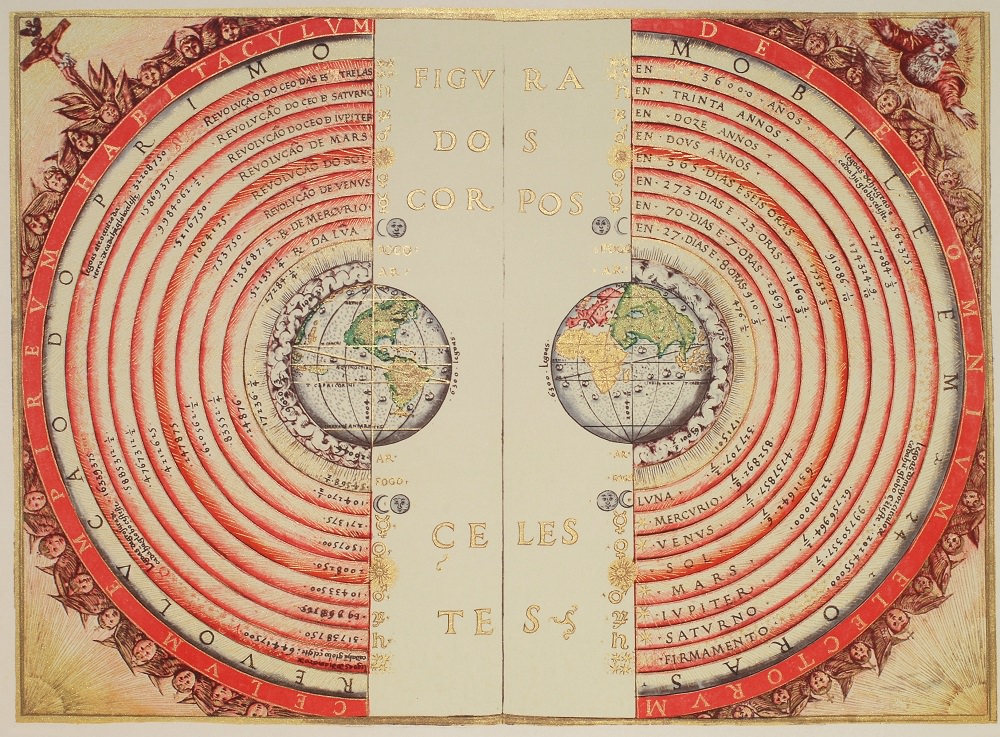
Nevertheless, the breadth of Aristotle’s work and his ability to synthesize different philosophical theories ensured that a considerable body of classical knowledge was preserved throughout the so-called Dark Ages.
Early Life and Academic Career
While the details of Aristotle’s life are not well-established and his biographical information is subject to speculation, historians generally agree on certain salient points. For instance, Aristotle was born in 384 BCE in the city of Stagira on the peninsula of Chalkidiki, located about 55 km (34 mi) east of modern-day Thessaloniki in northern Greece.
His father Nicomachus, was the personal physician to King Amyntas of Macedon, the father of Philip II (and grandfather to Alexander the Great). It is believed that this role allowed Aristotle to establish connections in the Macedonian royal court, which would eventually result in him becoming the tutor of Alexander the Great.
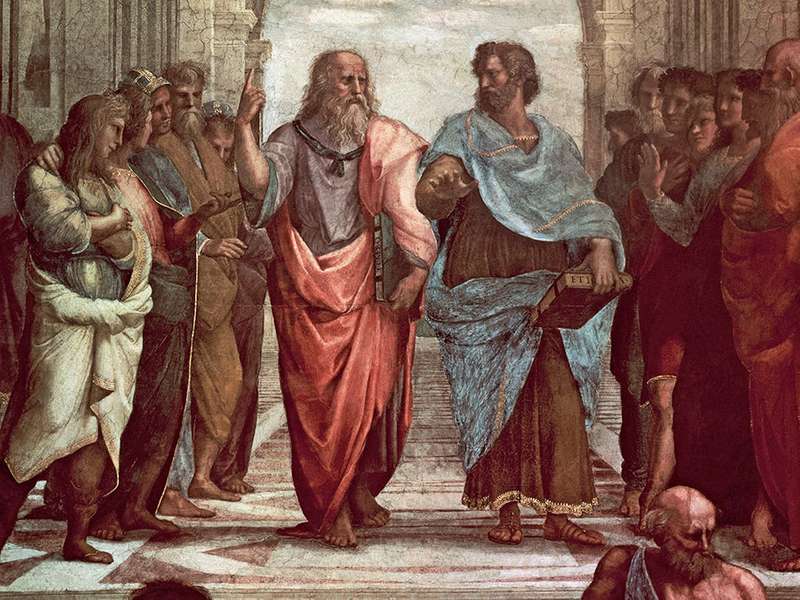
At the age of about thirteen, both of Aristotle’s parents died and Proxenus of Atarneus (his uncle through marriage) became his guardian and oversaw his early education. By the time he was seventeen, Aristotle moved to Athens to enroll in Plato’s famous Academy. It is here that Aristotle would spend the next 20 years of his life dedicated to the study of science and philosophy, and where he forged his close relationship with Plato.
In 348/347 BCE, after Plato’s death, Aristotle left Athens and became part of his Hermias’ court in the city Atarneus, Asia Minor (modern-day Turkey). In 343 BCE, Aristotle was invited by Philip II of Macedon to become the head of his royal academy and moved to the Macedonian royal court. By 335 BCE, Aristotle returned to Athens, established his own school there (the Lyceum), and conducted courses there until shortly before his death.
Logic and Metaphysics
In the time of Classical Antiquity, the division between philosophy and the sciences (much like the line between sciences) was not clearly defined. As such, it is difficult to compartmentalize Aristotle’s contributions to one over another. Nevertheless, his theories regarding politics, ethics, psychology, and metaphysics could be considered as distinct from his work in other fields.
Within these philosophical disciplines, Aristotle produced many works that would be immensely influential. In terms of logic, Aristotle had a profound influence on the formalization of arguments, which he referred to as “analytics” (or “logic” where dialectics, were concerned). The various works he penned on logical discourse were compiled into a six book volume called the Organon in 40 BCE.
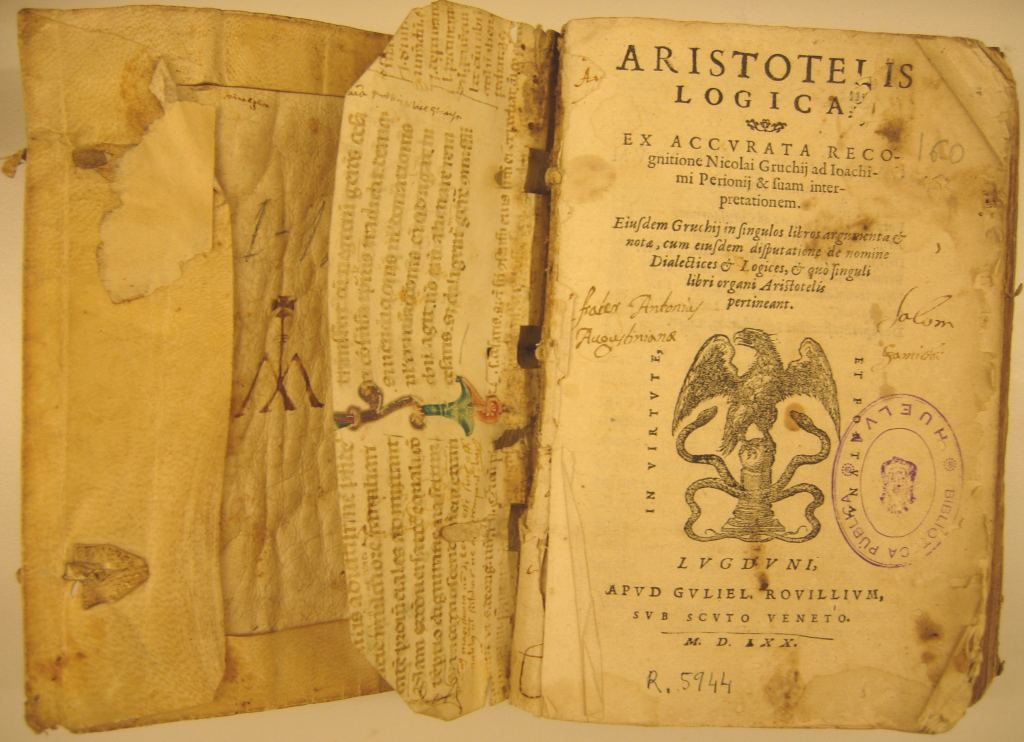
The central theory advanced by Aristotle is that a logical argument is built on propositions that either confirm or deny something. The propositions include a term, a part of speech that represents something but is not true or false in its own right; a subject and a predicate, which are capable of affirming or denying; and a syllogism, an inference in which a proposition necessarily follows the previous two. As the famous example illustrates:
“All philosophers are mortal; Socrates is a philosopher; therefore, Socrates is mortal.”
Aristotle also distinguished between different types of propositions based on whether or not they were general or particular. From this, he developed what is called the “fourfold scheme” of propositions, or the “square of opposition”. In this scheme, propositions are divided into one of four groups designated by the letters A, I, E, and O. They are described as follows:
- A-type: Universal and affirmative (“All philosophers are mortal”)
- I-type: Particular and affirmative (“Some philosophers are mortal”)
- E-type: Universal and negative (“All philosophers are not mortal”)
- O-type: Particular and negative (“Some philosophers are not mortal”)
For arguments within this scheme, the premises and conclusion share three terms among them, with each proposition containing two of them. It is also essential that the validity of syllogisms be universally recognized (i.e. “poodles are a type of dog”). An example of this kind of argument can be summarized as, “All poodles are dogs; some dogs are poodles; therefore, not all dogs are poodles.”

Then there are Aristotle’s contributions to the field of metaphysics, a term which was coined by the 1st century by the editor responsible for collecting selections of Aristotle’s work and publishing them together in a single treatise (titled Metaphysics). The work consists centrally of a critique of Plato’s theory of Forms and Ideas, in which all things the physical world is descended from a timeless, absolute and unchangeable original.
To this, Aristotle advanced a worldview that was rooted in analysis and observations of the natural environment. The result is a synthesis of naturalism and empirical science, which includes a critical inquiry into language, learning, the nature of existence, and permanence vs. change – all of which would inform the Western intellectual tradition for more than a thousand years.
Aristotle himself referred to this area of study as “first philosophy”, in that they address issues that fundamental or general rather than specific. In this respect, he saw metaphysics as dealing with things that are “better known to us” while natural philosophy (i.e. physics and mathematics) dealt with things that are “better known in themselves.” As he summarized in Part I, Book VI of Metaphysics:
“We answer that if there is no substance other than those which are formed by nature, natural science will be the first science; but if there is an immovable substance, the science of this must be prior and must be first philosophy, and universal in this way, because it is first. And it will belong to this to consider being qua being-both what it is and the attributes which belong to it qua being.”
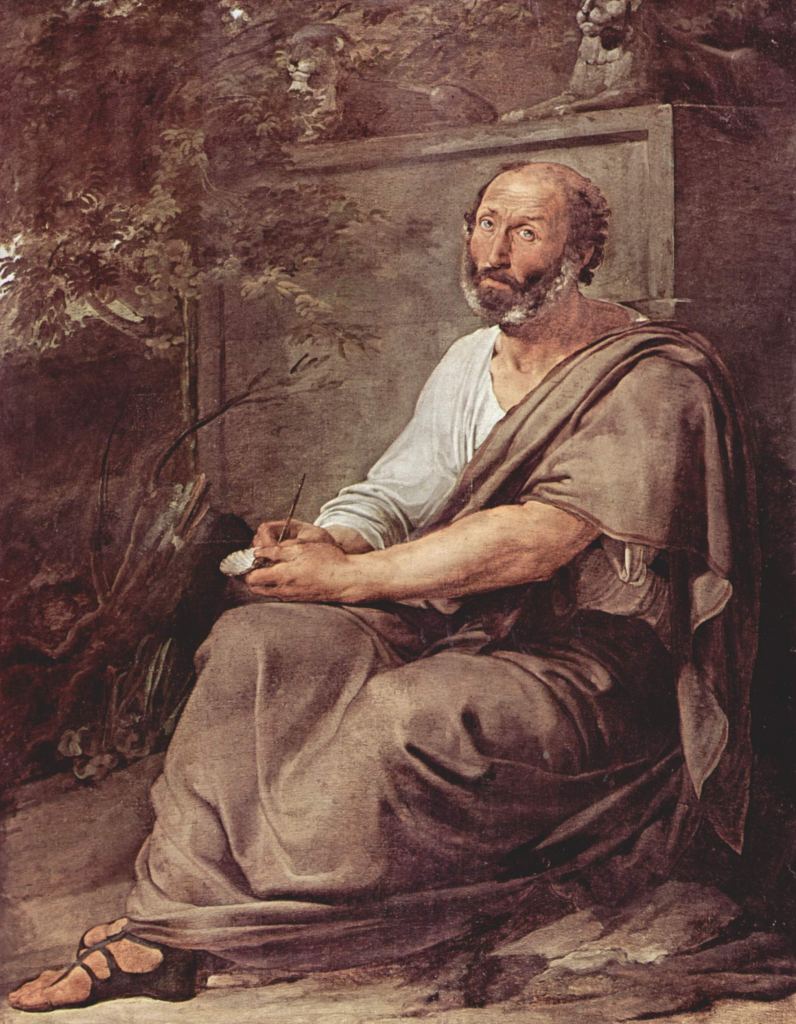
Physics and Astronomy
In the realms of biology, geology, optics, physics, and astronomy, Aristotle had an equally tremendous impact, establishing doctrines that would endure for over a thousand years. Like most philosophers of his age, Aristotle held that the Universe was composed of a combination of basic elements – in this case, Fire, Water, Earth, Air, and Aether (Spirit).
The four basic elements all have natural motions, where Earth and Water tend to fall and Air and Fire tend to rise. Aristotle held that the speed of this motion depended on the weight and density of the medium, and believed the vacuum could not exist since speeds would become infinite in one. He also advanced the idea that all motion required a Prime Mover (or First Mover), aka. something that initiates the process of motion.
These theories would be detailed in Aristotle’s seminal work, Physics, which he wrote around 350 BCE. In it, Aristotle proposed a system of general principles that governed all natural bodies in the Universe. These principles were based on change, which included motion (changes in place), quantitative change (changes in size or number), qualitative change, and substantial change (coming into and out of existence).
Key to Artistotle’s theories was the idea that the Universe was structured into concentric spheres with the Earth at the center and celestial spheres arranged around it. Whereas the terrestrial spheres were made of four elements, and therefore subject to change and decay, the celestial spheres were made of the fifth element (aether) and therefore not subject to change.

The composition of objects is what imbued them with their natural motions. From this, Aristotle’s theories regarding astronomy and cosmology naturally emerged. In the cosmological model he espoused, the spherical Earth was at the center of the Universe and the Moon, the Sun, the then-known planets (Mercury, Venus, Mars, and Jupiter), and the “fixed stars” all revolving around it.
The outermost celestial sphere was particularly important, as it was here that Aristotle placed the “Prime Mover” of the Universe. This reflected Plato’s own model that was detailed in the Socratic dialog Timaeus, but with additions that were outlined in Metaphysics and On the Heavens (ca. 350 BC). Like Plato, Aristotle’s astronomical theories were not a predictive mathematical model, but an attempt to explain planetary motions.
Aristotle’s explanations for astronomical phenomena and the behavior of the elements are also included in the treatise Meteorologica, another collection of his writings. In it, he refutes the idea that the Milky Way might consist of distant stars, a theory advocated by Anaxagoras (ca. 500–428 BCE) and Democritus (460–370 BCE), and instead attributed it to “the fiery exhalation of some stars” in the upper part of the atmosphere.
Aristotle brought his practice of basing theories on observational data to the fields of biology and geology as well. In terms of the former, he was an early proponent of dissection and noted the relationships between measurable quantities (such as body size) and lifespan. In terms of the latter, he was one of the first scientific minds to record geological observations and theorized that changes happened over very long timescales.

Other Contributions
Aristotle wrote several treatises on ethics, the most notable being Nicomachean Ethics. He considered ethics to be a practical matter (not theoretical) and that the virtue of something was tied to its proper function (ergon). Something was therefor inherently good or bad based on whether or not it worked effectively. In terms of human activity, he emphasized that the psuche (soul) must function in accordance with reason (logos).
Aristotle claimed that the aim of all human actions should be a “virtuous mean” between ideal behavior and excess, which he labeled eudaimonia (generally translated as “happiness” or “well-being”). To achieve this, Aristotle claimed that what was necessary was ethike arete (moral or ethical virtue), which arose from a combination of a good upbringing, education, and experience.
According to Artistotle, people who come together in a state of eudaimonia will foster an environment of practical wisdom (phronesis), intellect (nous), and the highest possible human virtue. By extension, Aristotle’s views on politics, economics, and education were a natural continuation of this reasoning, the former of which he summarized in his work Politics (or, A Treatise on Government).
This book is best known for its seminal quote, “man is by nature a political animal”, and espousing the theory that a community is an interdependent and organic whole. He also proposed the existence of six political entities based on their ethical nature, with three constituting the “good” variety (i.e. ruled for the good of all), and the other three constituting their perverted versions (i.e. ruled for the good of one group).
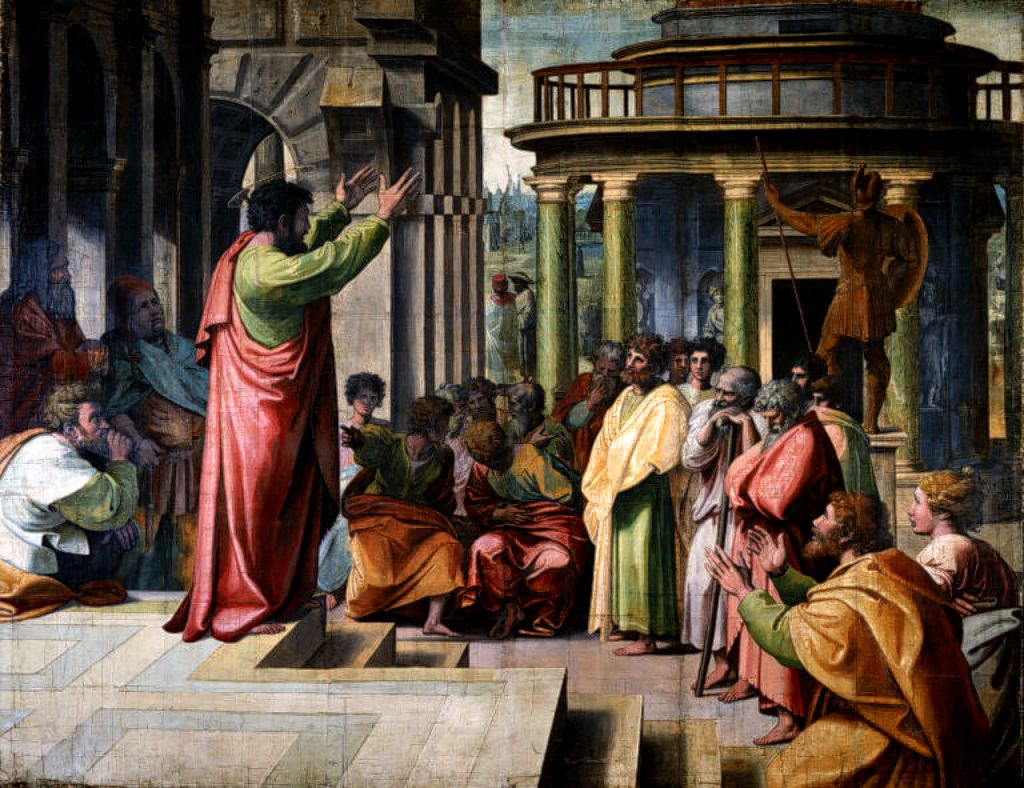
These consisted of the kingdom (tyranny), nobility (oligarchy), and a constitutional government (democracy). Above all, he stated that within the animal kingdom, humans were defined by their rationality. Therefore, all governments and the laws governing a city should strive to be dictated and in line with reason.
Alexander the Great
When in the court of Phillip II, Aristotle would oversee the education of Alexander the Great and some of his companions. Aristotle encouraged Alexander towards conquering Persia in the east, which was motivated in part by the former’s ethnocentrism, but also his personal enmity towards the Persian Empire – which was responsible for the death of Hermias (his father-in-law).
As Alexander completed his conquest of the Persian empire and much of Central Asia, he and Aristotle became estranged. This was apparently due to the former’s embrace of eastern culture and practices (which Aristotle considered as being inferior to those of Greece). In fact, amid the suspicions that Alexander had been poisoned, there was speculation that Aristotle played a role.
In 322 BCE, a year after Alexander died in his imperial capital of Babylon, anti-Macedonian sentiment revitalized in Athens. Because of his association with the Macedonian royal court and Alexander, Aristotle himself was the subject of suspicion and accusations of impiety and is reported to have stated: “I will not allow the Athenians to sin twice against philosophy” (a reference to the execution of Socrates).
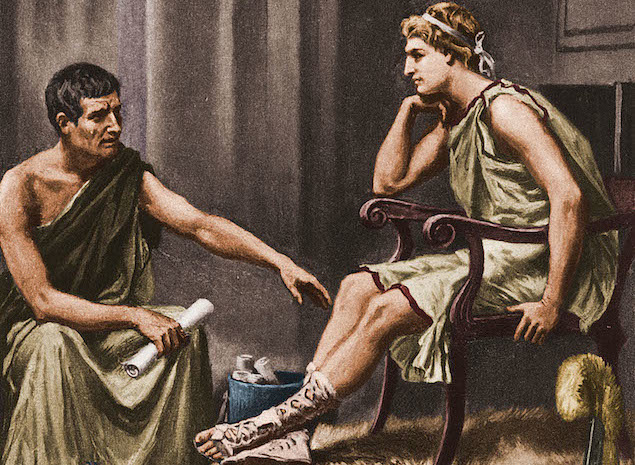
Death and Legacy
Hence why, in 322 BCE, Aristotle moved to his mother’s family estate in Chalcis on the island of Euboea, where he died of natural causes later that year. The Lyceum would carry on under the direction of Antipater – a former Macedonian general and statesman – whom Aristotle had named as his chief executor.
Despite the fact that his reputation had been sullied in his final year due to his association with Alexander, Aristotle had a profound influence over later Greek philosophers. By the time of the Middle Ages, his influence would become unparalleled, reaching from Western Europe and the Mediterranean to the Byzantine Empire and the Islamic world.
In particular, Aristotle’s model of the Universe would be standardized and improved by the Greek-Egyptian astronomer and mathematician Claudius Ptolemaeus (aka. Ptolemy). In his 2nd century CE astronomical treatise, the Almagest, he presented a geocentric model of the Universe that resolved many of the mathematical issues Aristotle’s model contained.
This model would remain established canon among medieval European and Islamic scholars for the next 1500 years. However, his influence would not be confined to astronomy and cosmology. Within the realms of logic, education, astronomy, biology, and optics (among others) Aristotle’s theories – or variants thereof – would be considered authoritative well into the 16th and 17th centuries.
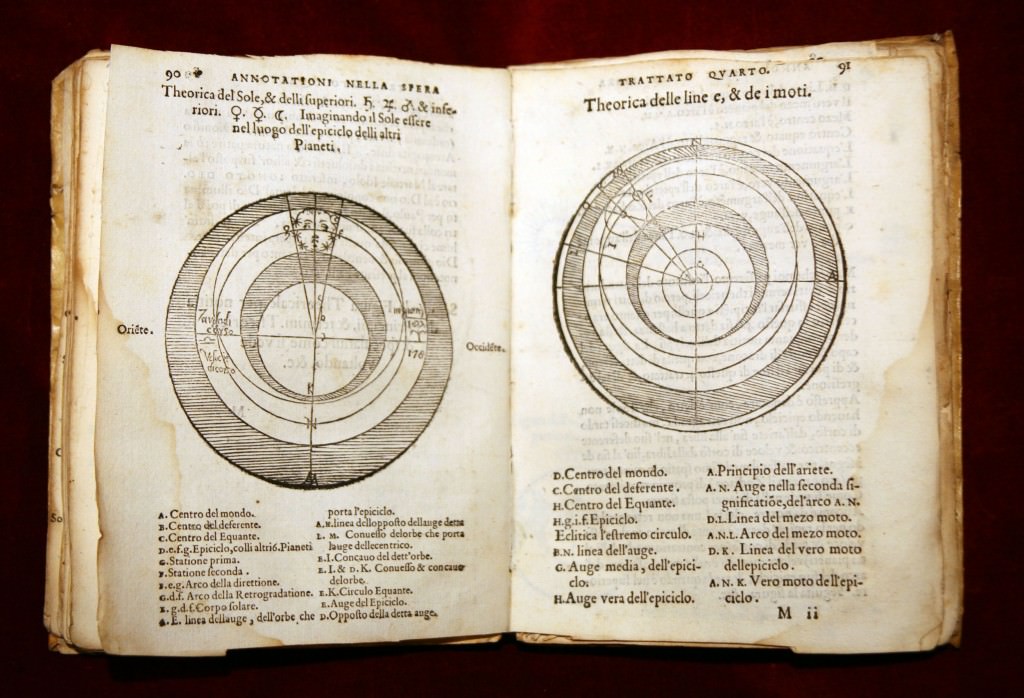
In fact, Aristotle’s ongoing authority was due in part to its consistency with elements of Judea-Christian theology. For example, his concept of a Prime Mover – a concept whereby all motion in the Universe is initiated by an “unmoved mover” – had very deistic overtones. This very idea would later be seized upon by Thomas Aquinas (1225-1274) in his Five Proofs, in which the first argument was a “prime mover.”
Aristotle’s belief that metaphysics were the “first philosophy” or fundamental may have also influenced notions that theology (spiritual) took precedence over the natural sciences (physical). Aristotle’s view that the celestial spheres were composed of aether (and therefore unchanging) was also in line with the Christian belief that the heavens were perfect and the Earth was base.
The idea of a geocentric Universe, where the Earth is the center of creation and all things revolve around it, was also very appealing in the context of Judea-Christian thought. In this sense, Aristotle lent a degree of scientific authority to a worldview based on theological conventions. Challenging and reforming these views was therefore a matter of challenging both established dogma and accepted scientific theories.
Hence why Aristotle’s legacy is sometimes considered mixed. What made his work such an enduring standard also led to it becoming an orthodoxy that imposed limitations. However, with the renewal of classical learning during the Renaissance and the transmission of classical knowledge preserved by Islamic scholars to Europe, these limitations would be transcended and new learning would occur.
Sources:

